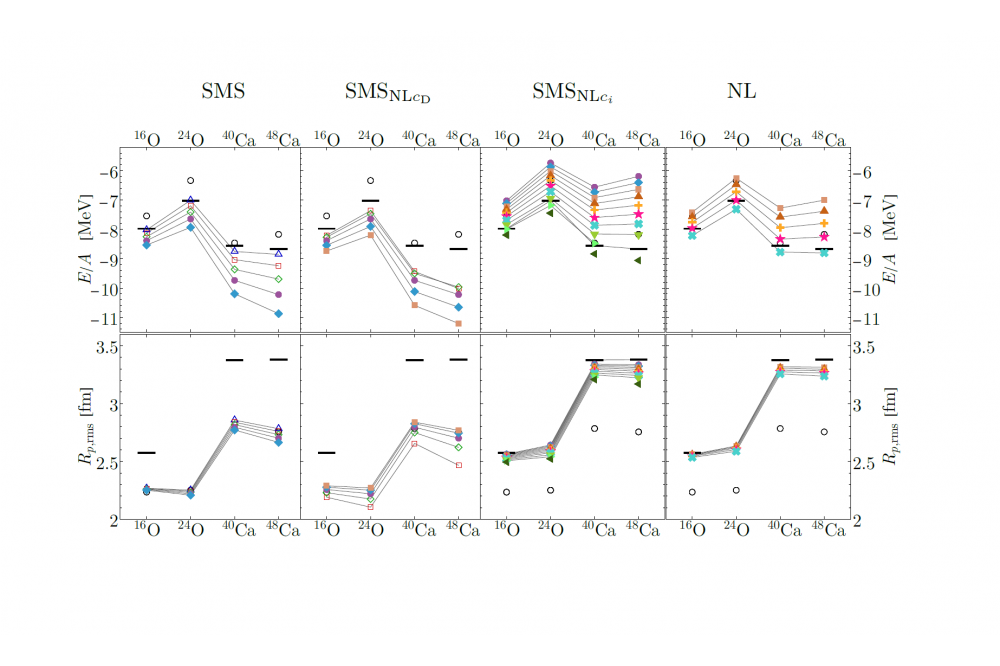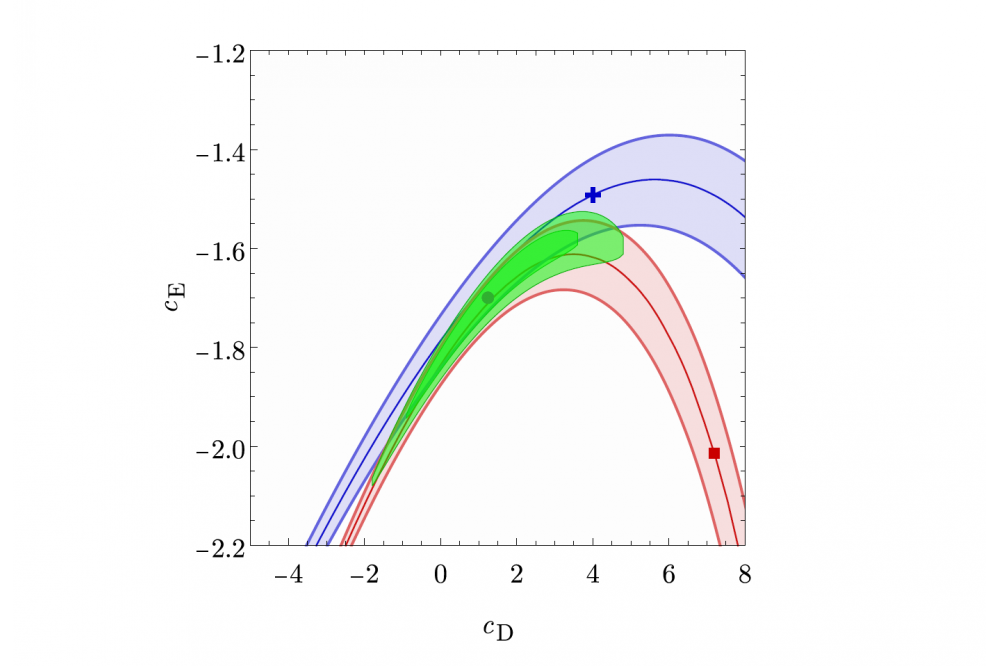Matrix Elements of New Families of Chiral Interactions
Einleitung
The goal of ab initio nuclear structure theory is the description of nuclei from first principles without uncontrolled approximations, allowing calculations with excellent predictive power. All of these calculations require the construction of nuclear interactions, which is done using chiral effective field theory (chiral EFT), a framework that has been extremely successful in recent years. Using these interactions directly in a many-body calculation is computationally expensive, hence, we use the Similarity Renormalization Group (SRG) to ’soften’ these interactions. The SRG improves the convergence behavior of many-body calculations, however, the SRG itself involves large-scale numerical calculations. This project provides the next generation of chiral interactions suitable for ab initio many-body calculations.
Methoden
Our main method is the SRG, which is a continuous unitary transformation of the Hamiltonian. This transformation can be written in a flow equation, that translates into a set of coupled nonlinear first-order differential equations. These are solved numerically with highly specialised codes developed within our group. The SRG decouples high- and low-momentum states and thereby prediagonalizes the Hamiltonian, which reduces the model space necessary to converge subsequent many-body calculations.
Ergebnisse
In this project we have calculated matrix elements of the next generation of chiral interactions, which we developed within the Low Energy Nuclear Physics International Collaboration (LENPIC) as well as in collaboration with Machleidt. These matrix elements have been used in many large-scale calculations within our group or by our collaborators. Furthermore, we optimized the phenomenological Gaussian four-body interaction and adapted it for tetraneutron calculations.
Diskussion
The systematic order-by-order analysis of the convergence of the chiral EFT expansion and the comparison of different regularization schemes are essential for a quantification of theory uncertainties for nuclear structure observables. With the newest generation of the Entem-Machleidt- Nosyk nucleon-nucleon interaction family in combination with three-nucleon interactions developed in this project, we have an interaction that can provide reliable nuclear observables up into the medium-mass regime.
First discrepancies between theory and experiment have been found in selected open-shell nuclei in the medium mass regime. In the next project period we want to tackle these discrepancies by incorporating the SRG into the fitting procedure, which should enable the construction of even softer interactions.
Furthermore, the consistent SRG evolution of the hyperon-nucleon-nucleon interaction will be performed. Moreover, the development of the interaction family within LENPIC indicates that we are missing crucial contributions either in the interaction or in the radius operator itself. In ongoing work, we will address both higher-order terms of the interaction and the radius operator.





